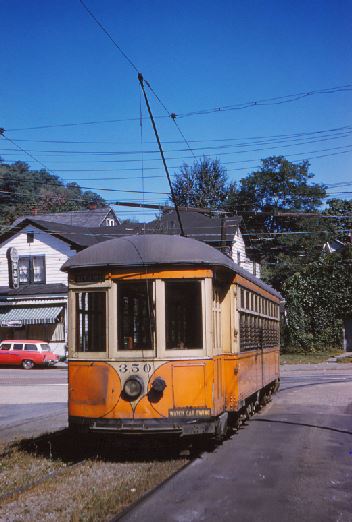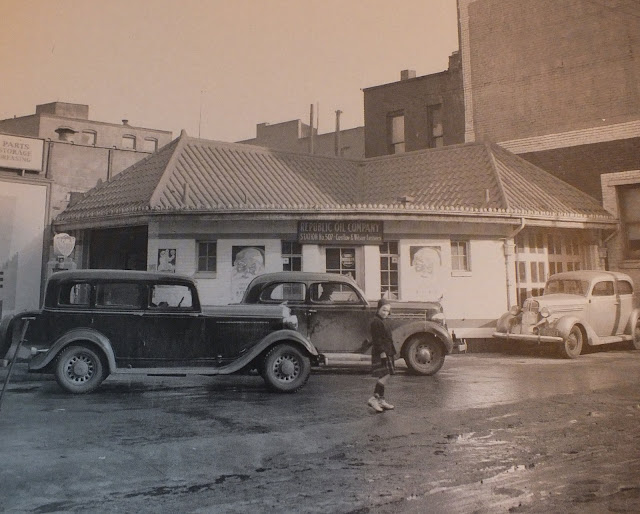To join our Facebook Page :CLICK HERE
To read the Johnstown Tribune - World War II Collection: CLICK HERE
To read thru our old Johnstown Newspaper Collection - CLICK HERE
Sunday, September 30, 2018
Richman Brothers - 1928
Schwartz Bros - 1928
Saturday, September 29, 2018
Friday, September 28, 2018
Thursday, September 27, 2018
Wednesday, September 26, 2018
Tuesday, September 25, 2018
Leitenberger Brothers

Fred and Carl Leitenberger's claim to fame is that they say they made the first cars ever built in Johnstown. Their two steam automobiles were constructed between 1896 and 1898.
One of them they sold to Joe Cole of Patton and the other to a laundryman in Cumberland, Maryland. The third car the Leitenbergers built in 1898 was powered by a four-cylinder gas engine.
They used a piano box buggy carriage for the body and had the castings for the engine made at the old Hannan Foundry in Johnstown.
The engine was mounted under the buggy seat and the rig was steered by a tiller.
The pair built the gas-powered horseless carriage by working nights in their home machine shop they had on Power Street in Cambria City. The biggest trouble the brothers had with their new car was keeping it running long enough to make a trial run and get back to the shop before it stopped again.
They eventually discovered the reason behind the trouble - after the engine got hot, the batteries would run down.
They then tried two sets of batteries with a two-way switch to enable them to cut over to the second set when the first ran down. This helped.
However, the solution came when they put in an induction coil to provide a heavier spark. They got the idea for the induction coil from the "shocking machines" they had been making to sell to doctors at one time. After they put the induction coil in, they were able to take their new horseless carriage for rides all around the Johnstown area. But they were never able to get anybody else interested in going into the horseless carriage business with them.
Folks around town called the pair crazy and that their cars belonged on a railroad track. The teamsters (wagon haulers) and horse and buggy set also didn't think much of them either.
The teamsters used to tell them they had no business on the road and when the brothers saw a team - they would have to pull off the road till the horses passed.
If it was on a hill, they would have to pull off the side of the road nearest the edge of the hill so that incase the horses became frightened, they wouldn't go over the hillside. The old steam cars could be as balky and troublesome as the early popping gas buggies.
Believe it or not - they would use oatmeal to seal up leaky joints - when the boiler heated up - it cooked the oatmeal which in turned served as a sealer for the leaking joints.
Carl - better known as "Charlie" operated his own machine shop which developed into the car dealership.
Fred followed a varied career, which included running a machine shop, serving as a brewery engineer and later as a rancher in Texas. By 1936, a local doctor in need of some braces for polio patients asked Fred if he could make him some. He did and started his orthopedic appliance service along Horner Street that made braces, artificial limbs and foot supports.
Note: In the future - I will also be writing about the Trabold Family - who also claim to have built the first car in Johnstown - given the advance of time - it is basically impossible to prove who really was first. But that's ok, these stories make for some very interesting reading - even if you can't prove who actually was first.
Codified Ordinance - Johnstown Borough - 1861
Codified Ordinance - Johnstown Borough - 1861: To levy and collect annually a tax on the owners of dogs not exceeding one dollar on the owner of but one dog, or two dollars on the owner of but one female dog, and to levy and collect such additional tax on the owners of more than one dog and in such ratio of increase, as they may deem proper.
Monday, September 24, 2018
Sunday, September 23, 2018
Schwartz Bros - 1928
Friday, September 21, 2018
Thursday, September 20, 2018
Wednesday, September 19, 2018
Police Pension Fund

The Johnstown police pension fund was started in 1913 when members of the force organized a baseball team and played games for the benefit of the new fund. The Johnstown-Altoona police series aroused high public interest and in two years the baseball team has raised a total of $17,000 ($388,000 now) for the pension fund. Appearing in the above picture of the 1913 police team are: (Left to right) First Row - James Adams, outfielder; Clyde Adams, second base; John Thomas, outfielder.
Second Row - Otto Fink, second base; Herman Hoffman, pitcher; Percy Benson, outfielder; Harry Owens, outfielder and Carol Steuer, shortstop.
Back Row - John Buechley, manager; James (Buckeye) Reynolds, first base; George Patterson, third base' John Volk, first base and George Bush, catcher.
Tuesday, September 18, 2018
Monday, September 17, 2018
New Machine Shop

James Kovalcik (left), 508 Edwards Hill Apartments and Harold Myers of Indiana are shown at work in the machine shop of the Wendel Manufacturing Company, Berkley Hills. The shop was installed in the aluminum awning firm's plant during the past year at a cost of about $100,000. It is part of the concern's expansion program. Dies and other equipment for the Wendel firm's branch fabricating shops will be machined here. The machine shop is tooled to build a complete fabricating unit every 60 days, enabling the awning firm to set up a new branch shop every two months, if conditions warrant.
1906 Johnstown Collegians
This grim group of football players answered a challenge of a South Fork eleven and organized for one game with just a week's notice back in 1906. They defeated South Fork and won a side bet of $3,000 ($75 Grand). The picture was taken in front of the old armory of Company H, 5th Regiment, National Guard, across from the Point Stadium where Suppes Motor Company now is located.
Members of the Collegians (left to right) are: First Row - Mike Holzman, Sil O'Connell, George Raab, Ed Yeckley, Miller and Ray Replogle.
Back Row: Ross, Tom Nokes, Harrison unidentified, Ralph Waring, McGee, Hecker, Wormell, Frank Baumer and Harry Cramer.
Members of the Collegians (left to right) are: First Row - Mike Holzman, Sil O'Connell, George Raab, Ed Yeckley, Miller and Ray Replogle.
Back Row: Ross, Tom Nokes, Harrison unidentified, Ralph Waring, McGee, Hecker, Wormell, Frank Baumer and Harry Cramer.
Sunday, September 16, 2018
State Theater - 1928
Star Radio - Atwater Kent - 1928
Saturday, September 15, 2018
Friday, September 14, 2018
Chair Factory - Hornerstown

Enjoy this brief look at the history of the chair factory in Hornerstown, 600 to 700 chairs are made daily at this plant. Frank Medvesek of 547 Russell Avenue finishes sanding a chair before it is sent to the paint-spraying room - seen in the background. The chairs are made on a production line basis and move through the plant on an overhead conveyor. The gentleman on the right is George DeFrehn - superintendent of the factory.
Since their beginnings in 1898 - it is estimated that more than 3 million chairs have been made at their Hornerstown plant.
The chair factory no longer markets its own products directly as it did for many years. In the 1940's it began making chairs exclusively for the National Store Fixture Company out of Baltimore, Maryland which marketed them in all parts of the country.
Actually, the chair-making process at DeFehn's was a three-fold operation. They made the wooden framework, F.T. Shank did the upholstering in his Geistown shop along with a leased space in the chair factory and the finishing work was done by the National Store Fixture Company with its own force of employees at the Johnstown plant.
The chairs made at the factory are of a modern design for kitchen, restaurant, school and other uses. With the exception of certain parts, they are made up of 14-ply laminated wood. Under the process, veneers in large sheets are glued and pressed into forms of the required shape. After the sheets are dried quickly by high frequency electric heat, the laminated wood is ready to be cut just like solid wood.
Chair manufacturing by the DeFehns dates back to 1858, when William DeFrehn opened a shop in Schuylkill County.
William had six sons - Robert, William, Charles,Frank, Augustus and George when he established their Johnstown factory in 1898 at its location at Horner and Poplar Streets.
Wednesday, September 12, 2018
Codified Ordinance - 1873
Borough of Johnstown - Codified Ordinance - 1873: If any person shall indecently expose his person, or publicly bathe, wash, or swim, when naked in either of the rivers within the limits of the borough between sunrise and half past eight o'clock, P.M., every person so offending shall pay a fine of not less than five dollars.
Tuesday, September 11, 2018
Monday, September 10, 2018
Humming Garment Industry
One operation of the busy garment industry in Johnstown is shown above. These girls, at the Johnstown plant of Bestform Foundations, are engaged in stitching corsets and brassieres manufactured by the firm. Occupied at the first four machines are these girls who can be easily identified in the picture: Florence Dobrowolsky, Evelyn Peles, Ruth Ramos and Lois Durica. Other Johnstown garment firms turn out dresses and pajamas. (This was the plant in town - not the later one on Broad Street.)
Sunday, September 9, 2018
Cambria Theatre - 1928
Subscribe to:
Comments (Atom)














































